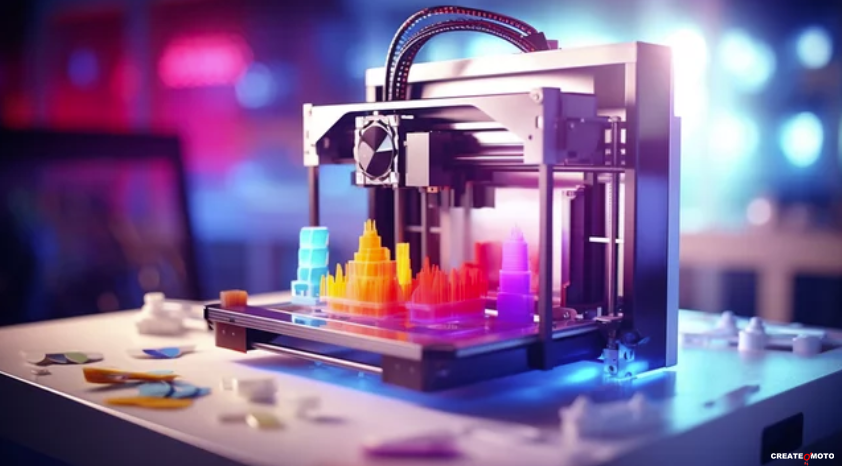
What is Rapid Prototyping?
Rapid prototyping refers to the process of quickly creating a working model or prototype of a product using computer-aided design (CAD) and advanced manufacturing techniques. The goal is to test and iterate designs in a shorter time frame. Whether you’re working in consumer electronics, automotive, or medical devices, rapid prototyping can help bridge the gap between idea and execution.
This process usually involves producing a series of physical or digital models to evaluate functionality, performance, and design aesthetics. Using this approach, teams can identify potential flaws, gather feedback, and make necessary adjustments before moving into full production.
Benefits of Rapid Prototyping
The benefits of rapid prototyping are vast, particularly for industries focused on product innovation. By speeding up the prototyping process, businesses can quickly validate ideas and enhance collaboration between teams. Let’s break down the key advantages.
Faster Iteration Cycles
One of the main benefits of rapid prototyping is the ability to create multiple iterations in a short amount of time. Whether you’re creating a 3D-printed prototype or working with digital mockups, rapid iteration helps to refine the product design. By getting feedback early on, design teams can quickly pivot or make necessary improvements, which reduces the chances of major issues later in the development phase.
Enhanced Collaboration
Rapid prototyping also fosters enhanced collaboration among team members. Designers, engineers, and stakeholders can review tangible models, test usability, and provide meaningful input during the product’s conceptual stage. This increased visibility across departments encourages a more unified approach to solving design challenges.
Cost Efficiency
Traditional prototyping methods often require significant resources and time investments. Rapid prototyping, by contrast, allows for the quick production of prototypes using advanced manufacturing techniques such as 3D printing and CNC machining. The flexibility of these processes helps minimize costs while avoiding expensive tooling, molds, and labor-intensive setups.
For more insights on how rapid prototyping saves time and cost, you can check out this article on rapid prototyping techniques.
Popular Rapid Prototyping Methods
Now that we’ve covered the benefits, let’s dive into some of the most commonly used rapid prototyping methods. Each of these techniques offers different advantages depending on the type of product and materials used.
1. 3D Printing (Additive Manufacturing)
3D printing is one of the most popular methods of rapid prototyping. By adding material layer by layer, 3D printers can quickly produce physical models based on digital designs. This technique is especially useful for creating complex geometries that would be difficult or impossible to fabricate using traditional methods.
3D printing is ideal for prototypes that require intricate details or customization. Some commonly used materials include plastics, resins, and even metals. With advancements in 3D printing technology, prototypes can now closely resemble the final product in terms of function and appearance.
If you’re curious about how 3D printing is revolutionizing product design, check out 3D Systems.
2. CNC Machining
CNC (Computer Numerical Control) machining is another powerful rapid prototyping method that involves cutting and shaping materials using high-precision machines. This method is particularly well-suited for creating metal prototypes or components that need to meet specific tolerances and mechanical properties.
Unlike 3D printing, CNC machining starts with a solid block of material (metal, plastic, etc.) and removes excess material to achieve the desired shape. It’s widely used in industries where durability and accuracy are key, such as aerospace and automotive.
3. Laser Cutting and Engraving
Laser cutting is a subtractive manufacturing process that uses a high-powered laser beam to cut through materials like wood, metal, acrylic, and textiles. Laser engraving, on the other hand, uses a laser to etch designs onto the surface of the material. These techniques allow for rapid creation of intricate prototypes, particularly for products requiring custom engravings or precision cuts.
Both laser cutting and engraving offer a high degree of customization, making them ideal for creating personalized or detailed prototypes. Laser-cut models can also be used for packaging prototypes or display components.
Integrating Rapid Prototyping into Product Development
Successful integration of rapid prototyping into your product development process requires planning and the right tools. Start by understanding your product goals and aligning your prototyping method accordingly. Here are some tips to help you maximize the benefits of rapid prototyping in your workflow.
Collaborate Early and Often
Collaboration is key to ensuring that your prototype evolves efficiently. Encourage frequent communication between designers, engineers, and other stakeholders to ensure that everyone is aligned on the product vision. Early feedback can save time and resources by preventing costly errors later on.
Leverage Advanced Software Tools
Utilize CAD software and simulation tools to fine-tune your designs before creating physical prototypes. Programs like SolidWorks and AutoCAD can help you identify potential issues, optimize designs, and even simulate real-world scenarios before committing to production.
For further insights into how software can aid rapid prototyping, explore this article from Autodesk.
Test and Iterate
Don’t be afraid to test and iterate multiple versions of your prototype. With rapid prototyping, the goal is to identify weaknesses or areas for improvement as quickly as possible. Whether you’re testing for structural integrity or user experience, iterating on your design can help ensure that the final product meets all necessary requirements.
Rapid Prototyping: The Key to Speed and Innovation
Rapid prototyping methods allow companies to accelerate product development and embrace innovation more efficiently. Whether you’re using 3D printing, CNC machining, or laser cutting, these techniques offer flexibility and precision. By integrating rapid prototyping into your development process, you’re able to iterate quickly, reduce costs, and bring better products to market faster.



0 Comments